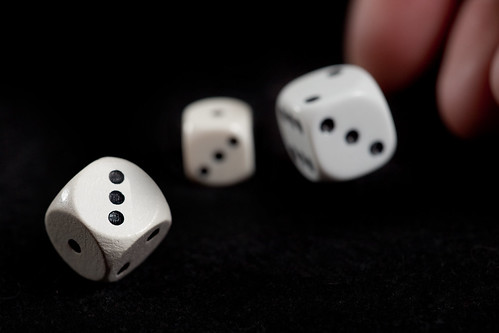Reflection on an article by Greg Costikyan: “Randomness: Blight or Bane?”
I’m already familiar with much of what Costikyan puts forth in this presentation. Here are the ideas I found most interesting:
Randomness is a factor in game aesthetics, and is therefore neither good nor bad.
Where strategy exists, more random tests means less randomness and more strategy, unless individual rolls have a disproportionate effect.
The enumeration of ways to break symmetry in a game: Random set-up, random resource distribution, random opportunities, random goals, or randomness affecting all players equally.
If randomness is an aesthetic factor, then it follows that a study of randomness in similar games will suggest the level of randomness your game should have.
The second idea (more tests = less random) makes perfect sense, but I think it fails to capture the whole picture. The import of those random tests (even if all equal) can still override any strategy. It’s possible the playtesters for my current game were just uncomfortable with this.
The list of ways to break symmetry was actually my inspiration for my current dice game design, because I wanted to implement something with randomness affecting all players equally. This sounds very much like a bidding system where the item being bid on is randomly selected.
Overall I found the article mildly interesting and somewhat useful, but I would have appreciated more worked examples and lessons about actually implementing randomness in games, not just studying it. I would like to see an expanded study of randomness as an aesthetic though.
